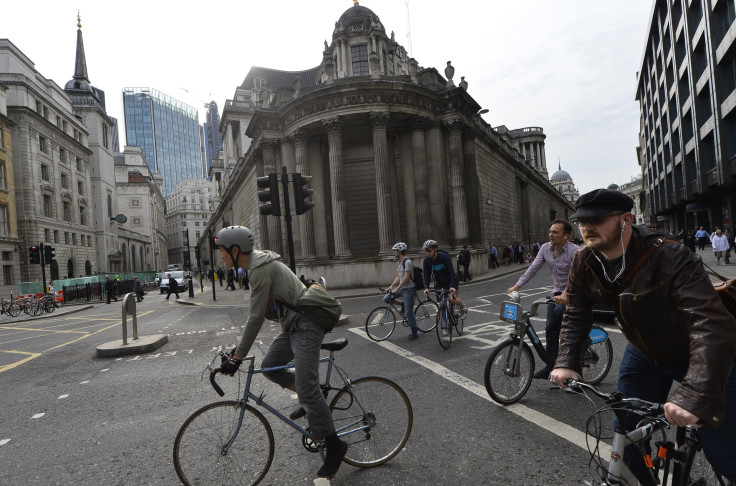UK Jobless Rate Falls More Than Expected; To Reach Target Threshold In Q3 2015

The jobless rate in the UK in the July-to-September quarter was pegged at 7.6 percent, lower than a consensus forecast of 7.7 percent, and down 0.2 percentage points from the April-to-June quarter, official data released on Wednesday showed.
Meanwhile, the Bank of England’s monetary policy committee, or MPC, in its latest inflation report released on Wednesday, said unemployment rate is falling faster than expected and could reach 7 percent in the third quarter of 2015. The committee had expected unemployment rate to remain at 7.8 percent in the third quarter, and had said in August that it would not raise interest rates until the unemployment rate fell to 7 percent, drawing criticism that such a threshold is unnecessary.
The drop in the unemployment rate in the third quarter “increases the likelihood that the Committee will predict a faster fall to the 7% threshold… potentially implying an earlier rise in interest rates,” Jonathan Loynes, chief European economist at Capital Economics, said in a note.
The claimant count, which measures the number of people claiming a jobseeker’s allowance, dropped by 41,700 in September, more than an estimated decline of 35,000, but less than a 44,700 drop in August. But, the claimant count rate fell slightly to hit 3.9 percent in September, down from 4 percent in August.
The average weekly wage, including bonus payments, rose 0.7 percent in the July-to-September quarter compared to the corresponding period in 2012, in line with expectations, but lower than the 0.8 percent increase recorded in the preceding quarter.
“Wage pressure remains very subdued… This supports the benign inflation picture given by yesterday’s CPI figures,” Loynes said.
The monetary policy committee said in the November inflation report that the recent economic recovery is likely to be sustained, provided the size of the asset-purchase program is maintained at 375 billion pounds ($595.8 billion).
“Inflation is projected to fall a little further over the next year or so, as the impetus from import prices fades,” the report said. “This near-term projection is lower than in August, reflecting the impact of unexpectedly low outturns and sterling’s recent appreciation. In consequence, the probability of CPI inflation being at or above the 2.5% knockout 18 to 24 months ahead is judged to be lower than in August, at around one third.”
The MPC, in its November meeting, observed that unemployment is likely to fall more quickly than anticipated in August, while CPI inflation appeared to be falling back to around the 2 percent target over the next year or so, according to the report.
The committee stressed that reaching the 7 percent jobless threshold “would not necessarily trigger an immediate policy response,” and instead, the decision would also depend on inflation outlook and the need to support stable output and employment rates. The committee voted to maintain the key Bank Rate at 0.5 percent and its asset-purchase program at 375 billion pounds.
© Copyright IBTimes 2025. All rights reserved.






















